German Songs- part 2
"The Ballad of the Lager Beer Riot"
a.k.a. "Broken Shillelaghs and Smashed Steins"
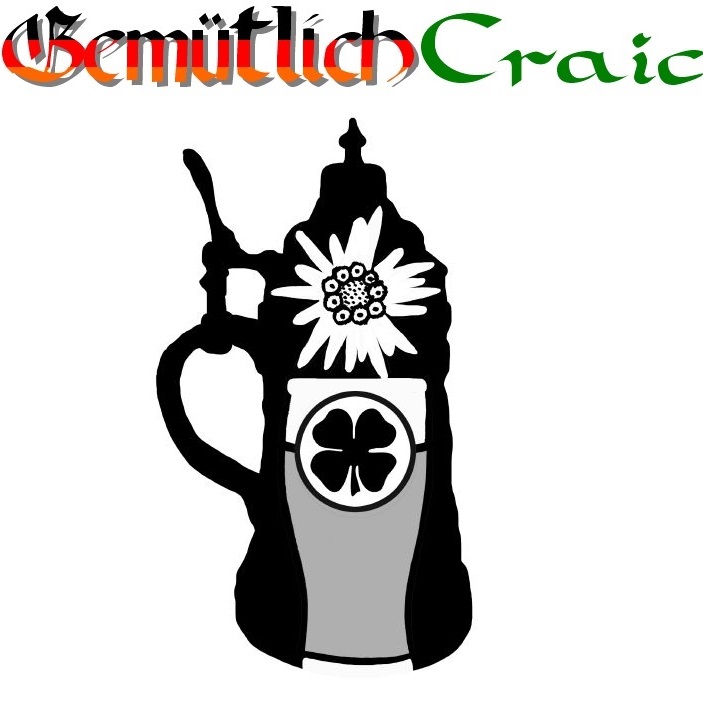
Thanks to Karen Zelak for this awesome pic. The quote above combines the German word "Gemütlichkeit" with the Irish word, "craic."
Ballad of the Lager Beer Riots.mp3
This song is our own composition, so we can't really call it a "German song," but it might be of interest to people who are interested in German-American history.
Shortly after we had come together as "Rush the Growler," Brian brought us a story that he thought would make a great song. He had learned it from a friend (thanks, Jim!), and the story seemed a perfect fit for our band. in the years before the Civil War, the Irish and German immigrants that made up large portions of the population of Chicago had joined together in the "Lager Beer Riots." The line that Brian remembered was that after the riot, the streets were filled with "broken shillelaghs and smashed steins."
That quote was enough to pique our interest, and Scott worked to include as much of the story as he could. We'll let the song speak to the details. One inaccuracy that Scott has since learned more about is the line that says, "The drawbridge was up," and later "The drawbridge came down." In fact, the bridge in question swung back and forth, rather than up and down.
This song ended up on our "Rush the Growler" CD. The recording of this song has the full "Rush the Growler" complement on it, with Matt on guitar and Brian on drum, and Scott on mandolin and lead vocals.
"Kriegslied der Division Blenker"
"The Warsong of Blenker's GermanDivision"
Of course, the melody for this song is "John Brown's Body," which was later used for "The Battle Hymn of the Republic."
We do not know the author of the German lyrics, but if this song is authentic, it must have come from the earliest years of the Civil War- 1861 or 1862.
The English lyrics are Scott's attempt to make a "singable" translation of the original.
Kriegslied der Division Blenker.mp3
Warsong of Blenker's German Division.mp3
Blenker's German Division was the largest "purely German" unit to serve in the American Civil War. It was organized after the First Battle of Bull Run in 1861. It probably included about 10,000 men, and though it was called "German," the division also included Hungarians, Italians, Swiss, Irish and native-born Americans. The division consisted of three brigades:
- First Brigade (Stahel's):
- 8th New York (Blenker's 1st German Rifles)
- 39th New York (Garibaldi Guard)
- 45th New York
- 27th Pennsylvania
- Second Brigade (von Steinwehr's)
- 29th New York
- 54th New York
- 58th New York
- 73rd Pennsylvania
- Third Brigade (Bohlen's)
- 41st New York (DeKalb Regiment)
- 68th New York
- 74th Pennsylvania
- 75th Pennsylvania
- 4th New York Cavalry
- Artillery Batteries of Schirmer, Dilger, Wiedrich, and Sturmfels
Ludwig Blenker was a veteran of the failed 1848 revolutions, like many of the German officers, and immigrated to America. He became the colonel of the 8th New York when it was formed in 1861, and from that position, became the general of the German Brigade upon its formation. This command later grew to be the division-sized command mentioned here.
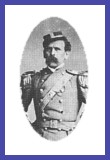
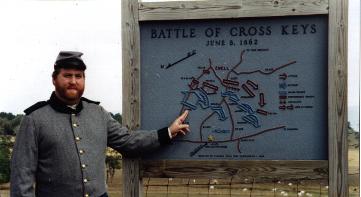
In June of 1862, at the Battle of Cross Keys in the Shenandoah Valley of Virginia, Blenker's Division charged against the rebel troops under Stonewall Jackson, but Blenker's men were routed. Soon after, they were combined with Fremont's command to form the 11th Army Corps. In 1863, that Corps met unfortunate situations at the Battles of Chancellorsville and Gettysburg.
Notice the gray uniforms, trimmed in green. This uniform is the early war uniform of the 8th New York Rifles, also known as the 1st German Rifles, which was organized by Blenker. The green in the trim is the traditional color of riflemen or sharpshooters. Only after confusion caused both sides to learn the hard way did the regiments begin to standardize with blue for a Union regiment's color.
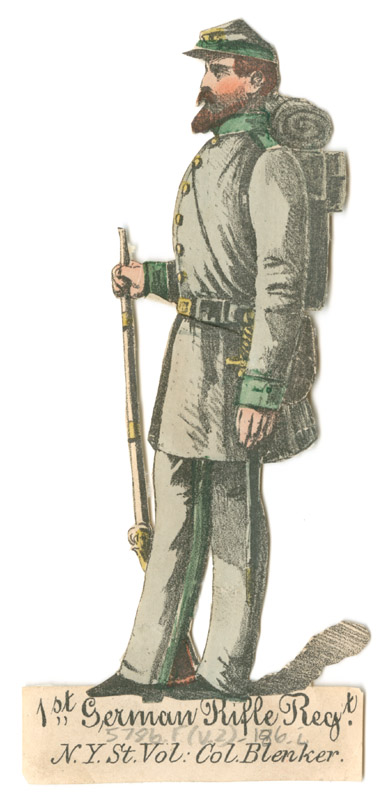
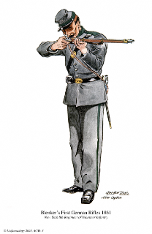
"Seemann (Deine Heimat ist das Meer)"
"Sailor (Your Home is the Sea)"
Wikipedia tells more about the history of this song from the 1960s. The German singer Lolita recorded it in 1959 and it became an international hit. Petula Clark recorded an English language version of the song, and there have been many other covers of it in various languages.
The song was first introduced to me in a first-semester German language class. The teacher told us that there was a time in the 1960s when it was not uncommon to hear it played on American radio. She had the class work together to translate the lyrics, and that is the English language version that I have used here.
(Honestly, if I could record this version anyway I wanted, I would have blend it with a German language version of "Brandy (You're a Fine Girl)" by Looking Glass, and have the song fade out with that playing. I have not been able to find a German language cover of that song. If you know of one, please let me know.)
Seemann deine Heimat ist das Meer.mp3